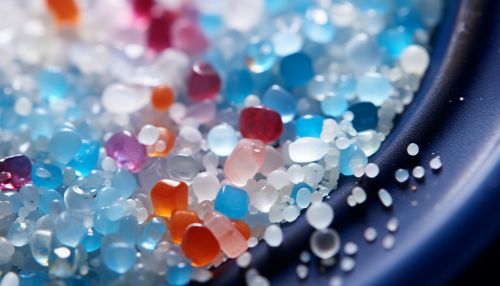The Impact of Microplastics on Aquatic Life
Introduction
Microplastics are small plastic particles, typically less than 5mm in size, that originate from a variety of sources, including the breakdown of larger plastic debris, microbeads in personal care products, and synthetic fibers from clothing. These particles have become a significant environmental concern due to their persistence in the environment and potential impacts on aquatic organisms. This article will explore the impact of microplastics on aquatic life, focusing on the physical, chemical, and biological effects.


Sources of Microplastics
Microplastics can originate from a variety of sources. Primary microplastics are intentionally manufactured at a small size for use in products such as cosmetics, industrial abrasives, and microbeads in personal care products. Secondary microplastics are produced from the fragmentation of larger plastic items, such as bottles and bags, due to physical, chemical, and biological degradation processes. Another significant source of microplastics is synthetic fibers from clothing, which can be released into the environment during washing.
Physical Effects of Microplastics on Aquatic Life
Microplastics can have a range of physical effects on aquatic organisms. Due to their small size, microplastics can be ingested by a wide range of organisms, from small plankton to large marine mammals. Once ingested, microplastics can cause physical harm, including internal injury, blockage of the digestive tract, and reduced feeding, leading to starvation. Furthermore, the buoyant nature of many microplastics can affect the buoyancy and mobility of aquatic organisms, potentially impacting their ability to feed and evade predators.
Chemical Effects of Microplastics on Aquatic Life
Microplastics can also have chemical effects on aquatic life. Plastics are known to contain a range of additives, such as plasticizers, flame retardants, and UV stabilizers, many of which can leach out of the plastic and into the surrounding environment. Furthermore, due to their hydrophobic nature, microplastics can adsorb persistent organic pollutants (POPs) from the surrounding water, potentially acting as a vector for these harmful substances into organisms that ingest the microplastics. Studies have shown that these chemicals can have a range of harmful effects, including endocrine disruption, reproductive effects, and immunotoxicity.
Biological Effects of Microplastics on Aquatic Life
In addition to physical and chemical effects, microplastics can also have biological effects on aquatic life. Microplastics can act as a substrate for the attachment and transport of invasive species and pathogens. Furthermore, the ingestion of microplastics can affect the energy balance of organisms, potentially leading to reduced growth and reproduction. There is also evidence to suggest that microplastics can affect the behavior of aquatic organisms, although this is an area that requires further research.
Mitigation and Future Research
Mitigating the impacts of microplastics on aquatic life is a complex challenge that requires a multifaceted approach. This includes reducing the production and use of plastic, improving waste management practices, and developing technologies to remove microplastics from the environment. Future research is needed to better understand the impacts of microplastics on aquatic life, including the effects of different types of microplastics, the mechanisms of harm, and the potential for long-term, population-level effects.
